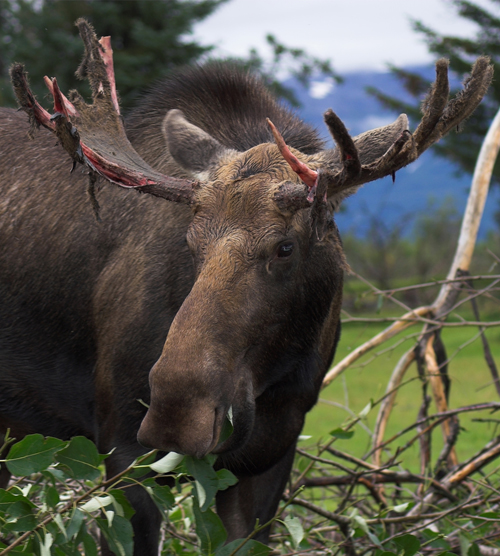Legacy Trail

Eater of Twigs
The word Moose is derived from ‘Moosewa’, which translates to ‘Eater of Twigs’ in Algonquin First Nations language. The Eater of Twigs, or Moose, are common throughout Kawartha Highlands, which occurs along the southern range boundary for Moose in this part of Ontario. Moose are important to Kawartha Highlands because they are considered ‘keystone species’. This means they are a species whose presence and role within an ecosystem has strong impacts on other species within the same ecosystem. For example, the feeding habits of Moose can influence the biodiversity of entire forest and wetland ecosystems because they consume such large amounts of vegetation. Also, the Algonquin wolf — which can also be found in Kawartha Highlands, relies on Moose as a food source.

The numerous wetlands of Kawartha Highlands provide Moose with one of their most important necessities, a gourmet spread of nutritious and delicious vegetation. Moose depend heavily upon aquatic plants to build up their fat reserves for winter. These plants contain more minerals and nutrients than plants found on land and ensure that a Moose’s body has enough fuel to make it through harsh winter weather when food is scarce. To prepare their bodies for winter — which can weigh over 700 kilograms — Moose consume up to 25 kilograms of aquatic plants every day! What is even more amazing? Moose are exceptional swimmers that can dive up to six metres underwater for a minute at a time.
© Kings Printer for Ontario, 2025